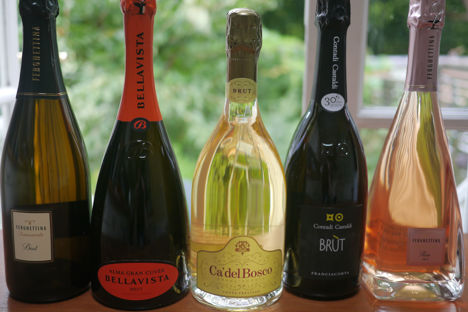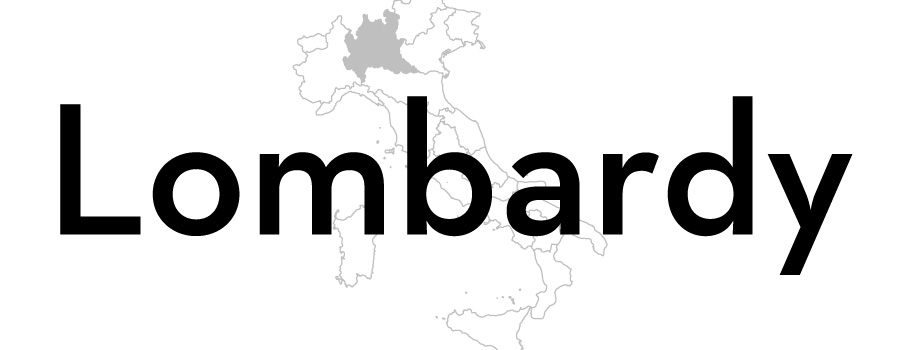
Franciacorta: Italy’s best-kept sparkling secret
Forget the Prosecco – Victoria Glass says this as yet unknown Italian fizz is set to take the world by storm. Find out why and get stockpiling.
View more from this series:
Italian wineThe UK has an unquenchable thirst for Italian bubbles. British drinkers guzzled a third of all the Prosecco produced last year – that’s forty million litres of the stuff. Prosecco has become the go-to drink at every event imaginable, from book launches to mid-morning maternity meet-ups (my NCT group’s ‘Fizz Fridays’ helped start the weekends off with a bang). And while it might have become the acceptable face of British binge-drinking, too much of a good thing can’t help but take the shine off. If you drink something that often, what do you reach for when the time comes to toast a real celebration? Enter Franciacorta: Italy’s answer to Champagne.
Franciacorta is a sparkling wine from the Province of Brescia with DOCG status. It was first referenced using the variant name Franzacurta in the Eighth Book of Brescia in 1277 and wines have been produced in the area for centuries. The name Franciacorta wasn’t used until 1958 when Guido Berlucchi created a still white wine called Pinot di Franciacorta and the first sparkling Franciacorta in 1961. By 1967, the wines (both still and sparkling) were given DOC status, but it was as recently as 1995 that the sparkling wines of Franciacorta were awarded the prestigious DOCG status. Franciacorta might be a very young wine appellation, especially by Italian standards, but it has serious calibre. Its youth belies its maturity and elegance; Franciacorta is a truly premium sparkling wine.
Like its more famous French rival, Franciacorta is made using the Méthode Champenoise, or ‘Traditional Method’, in which the second fermentation takes place in the bottle. This gives the wine more yeast contact, resulting in a drier wine with biscuity, brioche notes and a long finish. Prosecco, on the other hand, uses the Charmat or Martinotti method, in which the second fermentation for carbonation takes place in large pressurised stainless steel tanks. This method is cheaper and faster, and production can be done on a much larger scale. The results are fruity and clean, but lack the complexity of the wines produced using the Traditional Method.
Prosecco is so easy to drink, we’re literally knocking it back like lemonade; so much so that Dr Mervyn Druian, scientific adviser for the British Dental Association, recently warned against the dangers of a ‘Prosecco smile’ – tooth decay caused by acidic carbonated drinks. Franciacorta won’t make you any safer from the dentist’s drill if you drink it to excess, but there’s something about Lombardy’s sparkler that calls for sips rather than swigs; it lingers on the palate for longer than Prosecco and has a complexity that more than nudges at sophistication.
Franciacorta uses a blend of Chardonnay, Pinot Noir and Pinot Bianco grapes, but, unlike Champagne, no Pinot Meunier. According to Stefano d'Andrea, head sommelier of Luca Restaurant in Clerkenwell, London, it is the notes of flora from the Pinot Bianco that sets Franciacorta apart from Champagne.Prosecco is made using only Glera, a white grape with high acidity that has been grown in the Veneto and Friuli regions for hundreds of years. But it is not the grapes alone that make Franciacorta so different from other sparkling wines – it is the uniqueness of the terroir.
Franciacorta (the name of the wine as well as the region in which it is produced) is in Lombardy in central northern Italy, between Venice and Milan, on the hills between the southern shore of Lake Iseo. The vineyards are set in a sheltered valley that was formed by ancient glacial erosion; a position which protects the vines from harsh winds. This idyllic location creates a unique microclimate which is much warmer than France’s Champagne region, creating much riper fruits. The varied topography and soil makes the area the perfect spot for winemaking, as Italian wine writer and member of the editorial board of The World of Fine Wine Franco Ziliani explains. ‘Franciacorta can be complex, rich, almost like the flavour of Champagne, but there are great differences between the two. They have the same production method but absolutely different terroir due to the origin of soil – there is lower acidity in Franciacorta, which gives it a fruitier character.’
Franco Ziliani
Production of Franciacorta is growing steadily. Annual sales in 1996 were just 2.9 million bottles worldwide, but 2017 saw an increase to over six times that figure, with 18.5 million bottles sold. Compared to Champagne, with sales of 315 million bottles, and Prosecco, with sales of more than 400 million, Franciacorta is still a boutique industry, with most of its bottles remaining in Italy. ‘My taste is for Méthode Champenoise wines, including, of course, Franciacorta DOCG from wineries like Cavalleri, Colline della Stella, Gatti, Cà del Bosco, Fratelli Berlucchi and others,’ says Franco. ‘I’m Italian and I don’t like Prosecco at all, it is not a very good wine when you eat, it is better drunk as an aperitif or in a cocktail.’
Arturo Ziliani, CEO and winemaker of Berlucchi, the family-run company who were the first to make Franciacorta, told me, ‘Franciacorta is just perfect paired with food, and any typology has its ideal match: try the elegant Satèn with a fish starter, the ‘classic’ Brut with a risotto or the ‘winey’ Rosé with white meat dishes – or even dare red meat courses with Vintage or Riserva: it tastes like heaven!’
So where can you drink it? If you’re really serious, check out the Franciacorta Festival in Cantina (taking place on 16 and 17 September in 2017), but you don’t have to be in Italy to enjoy a glass. The rest of the world is starting to catch on, with exports increasing by at least fifteen percent last year. Restaurants are choosing it for their wine lists more and more and, in London alone, you can indulge in a bottle at places such as Sartoria, Bocca di Lupo, Veneta or Luca, to name a few. Anna Hughes, of Veneta, thinks the new popularity of Franciacorta is all down to its taste. ‘If I wanted to linger over a glass of sparkling wine, I’d choose Franciacorta over Prosecco everytime – there’s no competition! Franciacorta is more refined; almost savoury and with a much longer finish.’
It might not be able to rival Prosecco when it comes to quantity or price, but when it comes to depth and character, Franciacorta has it by the (ice) bucketload. Prosecco might be laidback, fun and fruity, but it lacks the sophistication of its less famous, but far sexier cousin. Let Prosecco remain the ubiquitous quaffer for everyday events, because Franciacorta is special and deserves to be saved for a real celebration.


